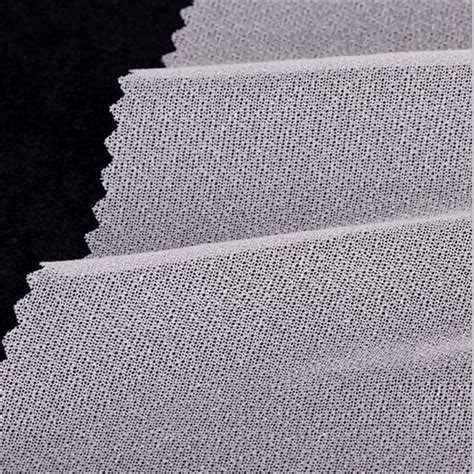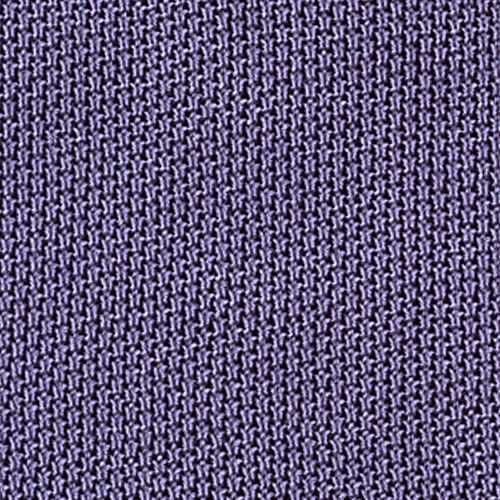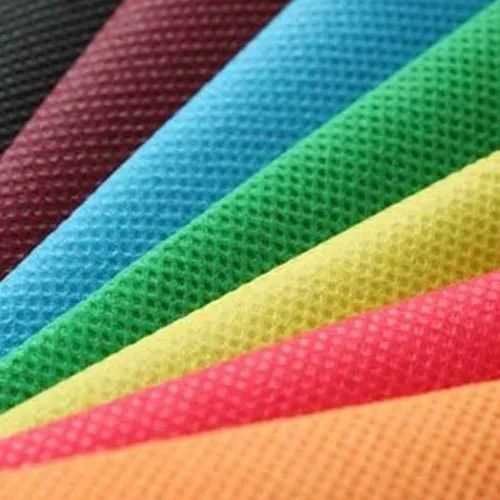Polyester is a popular synthetic fabric that is used in a wide range of applications, from clothing and accessories to home furnishings and industrial materials. It is known for its durability, affordability, and resistance to wrinkles and fading. However, when it comes to the question of whether polyester is knitted or woven, the answer is not as simple as it may seem.
Knitted fabrics are made by interlocking loops of yarn, while woven fabrics are created by weaving yarns together in a crisscross pattern. In the case of polyester, it can be both knitted and woven. The choice between the two depends on the intended use of the fabric and the desired properties.
Knitted polyester fabrics are known for their stretchiness and flexibility. They are often used in athletic wear, swimwear, and other garments that require freedom of movement. Knitted polyester can also have a smoother and softer feel, making it comfortable to wear against the skin. These fabrics are created on special machines that loop the yarns together in a specific pattern.
On the other hand, woven polyester fabrics are known for their strength and stability. They are commonly used in applications that require durability and structure, such as upholstery, curtains, and industrial textiles. Woven polyester is created on looms that interlace yarns at right angles to create a stable and tightly woven fabric.
Overall, whether polyester is knitted or woven depends on the specific needs of the end product. Both knitted and woven polyester fabrics have their own advantages and are used in a variety of applications. Whether you are looking for stretchiness and flexibility or strength and stability, there is a polyester fabric that will meet your needs.
What is Polyester?
Polyester is a synthetic fiber that is derived from petroleum. It is a versatile material that is commonly used in the textile industry due to its durability, wrinkle resistance, and easy maintenance. Polyester is known for its ability to retain its shape and color, making it a popular choice for clothing and home furnishings.
Polyester can be made through a process called polymerization, where chemicals and heat are used to create long chains of molecules. These chains are then spun into yarns, which can be used to create fabrics.
One of the main advantages of polyester is its ability to be blended with other fibers, such as cotton or wool, to create fabrics with enhanced qualities. For example, a polyester-cotton blend may combine the durability and wrinkle resistance of polyester with the softness and breathability of cotton.
Polyester fabrics are known for their resistance to shrinking and stretching, which makes them ideal for garments that require frequent washing or stretching. Additionally, polyester is highly resistant to wrinkles, making it a popular choice for travel clothing and upholstery.
In terms of care, polyester fabrics are generally machine washable and require minimal ironing. They are also resistant to fading, making them a good choice for outdoor or sun-exposed fabrics.
Overall, polyester is a durable, versatile, and low-maintenance material that has become a staple in the textile industry. It is used in a wide range of products, from clothing and home furnishings to industrial applications.
The Difference Between Knitted and Woven Fabrics
When it comes to fabric construction, there are two main methods that are commonly used: knitted and woven. Each of these methods creates fabrics with distinct characteristics and uses. Here are the key differences between knitted and woven fabrics:
Knitted Fabrics:
- Construction: Knitted fabrics are created by interlocking yarns in a series of loops, forming a flexible textile. This construction gives knitted fabrics their characteristic stretchiness and elasticity.
- Elasticity: Knitted fabrics have a natural stretch due to the way the yarns are looped together. This makes them comfortable to wear and provides ease of movement.
- Appearance: Knitted fabrics typically have a more textured and varied appearance compared to woven fabrics. They can have different patterns, such as ribbing or cable knit, which adds to their visual interest.
- Breathability: Knitted fabrics are generally more breathable than woven fabrics. The loops in the fabric allow for better airflow, making them suitable for garments that need to keep the wearer cool and comfortable.
- Common uses: Knitted fabrics are commonly used in T-shirts, sweaters, socks, and various types of activewear. They are also popular for making accessories like scarves and hats.
Woven Fabrics:
- Construction: Woven fabrics are created by interlacing two sets of yarns, known as the warp and the weft, at right angles. This interlacing creates a strong and stable fabric structure.
- Strength: Woven fabrics are known for their strength and durability. They are less prone to stretching or losing their shape over time.
- Appearance: Woven fabrics have a more uniform and flat appearance compared to knitted fabrics. They can have different weave patterns, such as plain weave, twill weave, or satin weave, which adds to their visual appeal.
- Stability: Woven fabrics have less stretch and elasticity compared to knitted fabrics. This makes them suitable for garments that require a more structured and tailored fit.
- Common uses: Woven fabrics are commonly used in shirts, pants, dresses, skirts, and various types of upholstery. They are also popular for making home decor items like curtains and tablecloths.
Both knitted and woven fabrics have their own unique characteristics, and the choice between them depends on the desired properties and end use of the fabric. Whether you prefer the stretch and breathability of knitted fabrics or the strength and stability of woven fabrics, understanding the differences between the two can help you make informed decisions when selecting fabrics for your projects.
Knitted Polyester: Characteristics and Uses
Polyester is a versatile synthetic fiber that can be knitted into various types of fabrics. Knitting is a method of creating fabric by interlocking loops of yarn or thread, and polyester is commonly used as a material for knitted fabrics due to its unique properties.
Here are some key characteristics of knitted polyester:
- Elasticity: Knitted polyester fabrics have good elasticity, allowing them to stretch and recover their shape easily. This makes them comfortable to wear and ideal for form-fitting garments.
- Wrinkle resistance: Polyester fibers are naturally wrinkle-resistant, meaning that knitted polyester fabrics tend to hold their shape and remain relatively wrinkle-free even after extended use or laundering.
- Durability: Polyester is a durable material that can withstand regular wear and tear. Knitted polyester fabrics are less prone to tearing or fraying compared to woven fabrics.
- Moisture-wicking: Knitted polyester fabrics have excellent moisture-wicking properties, meaning that they can effectively draw moisture away from the skin to keep the wearer dry and comfortable.
- Resistance to mildew and shrinkage: Polyester is inherently resistant to mildew growth and has low shrinkage properties, making knitted polyester fabrics easy to care for and maintain.
Due to its characteristics, knitted polyester is used in a wide range of applications:
- Apparel: Knitted polyester fabrics are commonly used in sportswear, activewear, and outdoor clothing due to their flexibility, moisture-wicking properties, and durability.
- Home textiles: Knitted polyester is used in the production of various home textiles, such as bedding, curtains, and upholstery, due to its wrinkle resistance and durability.
- Medical textiles: Knitted polyester fabrics are used in the medical field for applications such as surgical gowns, wound dressings, and bandages due to their moisture-wicking properties and ease of sterilization.
- Industrial textiles: Knitted polyester fabrics are utilized in industrial applications such as filters, conveyor belts, and geotextiles due to their strength, durability, and resistance to various environmental conditions.
In conclusion, knitted polyester fabrics possess valuable characteristics such as elasticity, wrinkle resistance, durability, moisture-wicking properties, and resistance to mildew and shrinkage. These properties make them suitable for a variety of applications ranging from apparel to home textiles, medical textiles, and industrial textiles.
Pros and Cons of Knitted Polyester
Polyester is a popular synthetic fiber that is commonly used in clothing, including knitted garments. Knitted polyester offers several advantages and disadvantages compared to other fabrics, and it is important to consider these factors when choosing clothing made from this material.
Pros:
- Durability: Knitted polyester is known for its durability and strength. It is a resilient fabric that can withstand wear and tear, making it ideal for everyday clothing.
- Elasticity: This fabric has excellent elasticity, which allows it to stretch and recover its shape easily. It provides a comfortable and flexible fit, making it suitable for athletic and activewear.
- Wrinkle-resistant: Polyester is naturally wrinkle-resistant, which means that knitted polyester garments require minimal ironing or steaming. This characteristic makes it a low-maintenance fabric.
- Colorfastness: Polyester has excellent color retention, even after multiple washes. This means that knitted polyester garments will maintain their vibrant colors for a long time.
- Quick-drying: Knitted polyester has moisture-wicking properties, meaning it draws moisture away from the body and dries quickly. This makes it a suitable choice for sportswear and outdoor clothing.
Cons:
- Breathability: Knitted polyester is not as breathable as natural fibers like cotton or linen. It tends to retain heat and moisture, which can make it less comfortable to wear in hot and humid conditions.
- Odor retention: Polyester fibers can hold onto odors more easily than natural fibers. This means that knitted polyester garments may require more frequent washing to keep them smelling fresh.
- Potential for pilling: Knitted polyester garments can be prone to pilling, which is the formation of small fabric balls on the surface. This can occur with regular wear and washing.
- Environmental impact: Polyester is a petroleum-based synthetic fiber, which means that its production contributes to carbon emissions and relies on non-renewable resources. Additionally, polyester is not biodegradable and can take a long time to decompose in landfills.
Overall, knitted polyester offers durability, elasticity, and easy maintenance. However, it may not be the best choice for those looking for breathability, eco-friendly options, or minimal odor retention. Consider your needs and preferences to decide if knitted polyester is the right fabric for your clothing.
Woven Polyester: Characteristics and Uses
Polyester is a versatile synthetic fabric that can be woven into different types of fabric constructions. When polyester is woven, it is known as woven polyester fabric. Woven polyester has a unique set of characteristics that make it suitable for a wide range of applications.
Here are some key characteristics of woven polyester:
- Durability: Woven polyester is highly durable, making it resistant to wear and tear. This makes it an ideal choice for applications that require long-lasting and sturdy fabrics.
- Strength: Polyester fibers have high tensile strength, which means that woven polyester fabric can withstand stretching and pulling without easily breaking or tearing.
- Wrinkle Resistance: Woven polyester has inherent wrinkle resistance, which means it maintains a smooth appearance even after extended use or storage.
- Quick Drying: Polyester has low moisture absorption, allowing woven polyester fabric to dry quickly. This is particularly useful for applications where moisture management is important, such as in sportswear or outdoor apparel.
- Stain Resistance: Polyester fibers have a high resistance to stains, making woven polyester fabric easy to clean and maintain.
Woven polyester fabric is widely used in various industries and applications, including:
- Apparel: Woven polyester is commonly used to make clothing items such as jackets, pants, dresses, and skirts. Its durability, wrinkle resistance, and quick-drying properties make it suitable for both casual and performance-oriented garments.
- Home Textiles: Woven polyester fabric is used for home textile applications such as curtains, upholstery, bed sheets, and tablecloths. Its strength and stain resistance make it a popular choice for these purposes.
- Industrial Use: Woven polyester is also utilized in various industrial applications, including conveyor belts, safety belts, and industrial filters. Its durability and strength make it well-suited for these demanding environments.
- Geotextiles: Woven polyester is used in geotextiles, which are permeable fabrics that are used in civil engineering projects for applications such as soil stabilization, erosion control, and drainage.
- Outdoor Equipment: Woven polyester fabric is used in outdoor equipment such as backpacks, tents, and tarps. Its durability and quick-drying properties make it suitable for withstanding harsh weather conditions.
In conclusion, woven polyester fabric has a set of unique characteristics that make it suitable for a wide range of applications. Its durability, strength, wrinkle resistance, quick-drying properties, and stain resistance make it a popular choice in various industries such as apparel, home textiles, industrial use, geotextiles, and outdoor equipment.
Pros and Cons of Woven Polyester
Woven polyester fabric is known for its durability and versatility. Here are some of the pros and cons of using woven polyester:
Pros:
- Durable: Woven polyester is resistant to stretching and pulling, making it less likely to tear or rip compared to other fabrics.
- Wrinkle-resistant: Woven polyester has a natural resistance to wrinkling, making it a great choice for garments and products that need to maintain a polished appearance.
- Easy to care for: Woven polyester is machine washable and dries quickly, making it convenient for everyday use.
- Colorfast: Woven polyester has excellent color retention, meaning the fabric’s color won’t fade or bleed after multiple washes.
- Lightweight: Woven polyester is lightweight, making it comfortable to wear and ideal for travel or outdoor activities.
Cons:
- Lack of breathability: Woven polyester does not have as much breathability as natural fibers like cotton or linen, which can make it less comfortable to wear in hot or humid climates.
- Static cling: Woven polyester has a tendency to produce static electricity, causing clothing items to cling to the body. Using antistatic sprays or dryer sheets can help reduce this issue.
- Potential for pilling: As with any fabric, woven polyester can develop pills over time due to friction. However, high-quality woven polyester fabrics are less prone to pilling.
- Environmental impact: As a synthetic fabric, woven polyester is derived from petrochemicals and requires energy-intensive manufacturing processes. This can have a negative impact on the environment.
In conclusion, woven polyester has several advantages, such as durability, wrinkle-resistance, and easy care. However, it also has some drawbacks, including limited breathability and potential static cling. When choosing woven polyester, it’s essential to consider your specific needs and preferences.
How to Identify Knitted and Woven Polyester Fabrics
Polyester fabrics can be either knitted or woven, and it is important to know how to identify which type of fabric you are working with. Here are some tips to help you differentiate between knitted and woven polyester fabrics:
- Look at the fabric structure: Knitted polyester fabrics have a more flexible, stretchy structure, while woven polyester fabrics have a more rigid, structured appearance. Knitted fabrics are made using a series of interlocking loops, while woven fabrics are made by weaving horizontal and vertical threads together.
- Check the fabric thickness: Knitted polyester fabrics tend to be thinner and more lightweight compared to woven polyester fabrics, which are usually thicker and heavier.
- Observe the fabric surface: Knitted polyester fabrics often have a textured surface and a more visible grain, while woven polyester fabrics usually have a smoother and more uniform surface.
- Inspect the fabric edges: Knitted polyester fabrics usually have selvage edges that do not unravel, while woven polyester fabrics have finished, non-selvage edges that may fray.
- Consider the fabric drape: Knitted polyester fabrics have a greater drape and fluidity, while woven polyester fabrics have a less fluid drape and tend to hold their shape better.
- Test the fabric stretch: Knitted polyester fabrics have a natural stretch due to their structure, while woven polyester fabrics generally have little to no stretch.
By considering these factors and using some basic observation techniques, you can easily identify whether a polyester fabric is knitted or woven. This knowledge will help you choose the right fabric for your projects and understand its properties and behavior.
FAQ:
What is polyester made of?
Polyester is made from synthetic fibers, specifically from a type of polymer called polyethylene terephthalate (PET).
Is polyester knitted or woven?
Polyester can be both knitted and woven. It is a versatile fabric that can be produced in various textures and designs.
What are the advantages of polyester?
Polyester has several advantages. It is highly durable, easy to care for, and resistant to wrinkles and shrinking. It also dries quickly and is resistant to mildew and most chemicals.
Can polyester fabrics be used for outdoor purposes?
Yes, polyester fabrics are commonly used for outdoor purposes. They are resistant to UV radiation, moisture, and mildew, making them suitable for outdoor furniture, umbrellas, and awnings.
How is polyester fabric produced?
Polyester fabric is produced through a process called polymerization, where polyester fibers are formed from a liquid polymer solution and then spun into yarn. The yarn can then be knitted or woven into fabric.
What is the difference between knitted and woven polyester fabric?
Knitted polyester fabric is made by interlocking loops of yarn, creating a flexible material with stretch. Woven polyester fabric, on the other hand, is made by intertwining vertical and horizontal yarns, resulting in a more structured and stable material.


